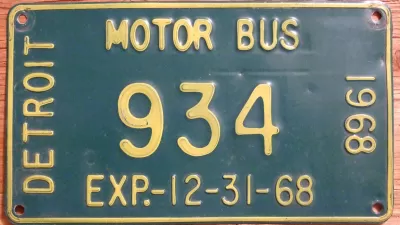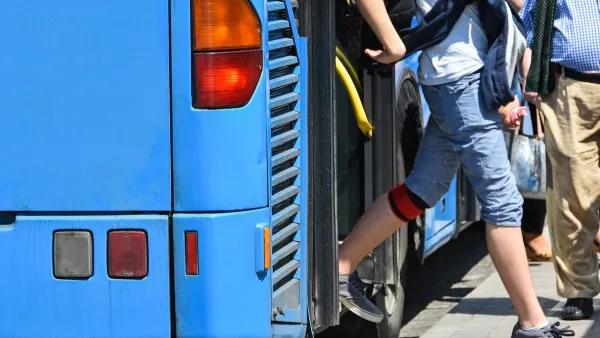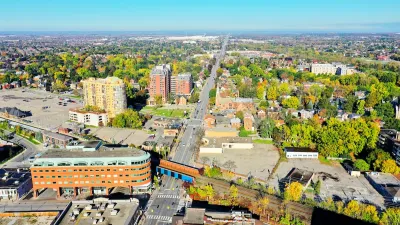In a recent article for the Washington Post, Matthew Dolan details the sub-par state of bus service in Detroit—a city where residents live without cars in quickly growing numbers.

“Bus lines, which have a daily ridership of 100,000, have been cut or curtailed in recent years. Aging, poorly maintained buses regularly conk out, leaving remaining ones so overcrowded they often blast through stops without taking on new passengers. Many days, nearly one-third of all buses don't even make it out of their depots because of mechanical or staffing problems, according to transit advocates, union and city officials. The average age of a Detroit bus is 9½ years, the back end of a 12-year life span,” writes Matthew Dolan.
To many in the city of Detroit, transit service is not an alternative form of transportation. “More than one in four households didn't have access to a car in 2012, up five percentage points since 2007,” explains Dolan. And the lack of transit and bus service leaves the labor force with few good options for getting to and from work. “Only 20% of people in the Detroit metropolitan area can reach their job within 90 minutes using public transportation, ranking it 71st among the nation's top 100 metro areas for labor access rate…”
There have been a few signs of improvement for the state of the bus system recently, however, after years of bad news: “In February, the city increased weekend and overnight service on more than a dozen routes. Last week, city officials completed installation of exterior and interior security cameras on 50 buses, with an additional 250 expected by the end of the summer.”
FULL STORY: Detroit's Broken Buses Vex a Broke City

Maui's Vacation Rental Debate Turns Ugly
Verbal attacks, misinformation campaigns and fistfights plague a high-stakes debate to convert thousands of vacation rentals into long-term housing.

Planetizen Federal Action Tracker
A weekly monitor of how Trump’s orders and actions are impacting planners and planning in America.

In Urban Planning, AI Prompting Could be the New Design Thinking
Creativity has long been key to great urban design. What if we see AI as our new creative partner?

Baker Creek Pavilion: Blending Nature and Architecture in Knoxville
Knoxville’s urban wilderness planning initiative unveils the "Baker Creek Pavilion" to increase the city's access to green spaces.

Pedestrian Deaths Drop, Remain Twice as High as in 2009
Fatalities declined by 4 percent in 2024, but the U.S. is still nowhere close to ‘Vision Zero.’

King County Supportive Housing Program Offers Hope for Unhoused Residents
The county is taking a ‘Housing First’ approach that prioritizes getting people into housing, then offering wraparound supportive services.
Urban Design for Planners 1: Software Tools
This six-course series explores essential urban design concepts using open source software and equips planners with the tools they need to participate fully in the urban design process.
Planning for Universal Design
Learn the tools for implementing Universal Design in planning regulations.
planning NEXT
Appalachian Highlands Housing Partners
Mpact (founded as Rail~Volution)
City of Camden Redevelopment Agency
City of Astoria
City of Portland
City of Laramie





























